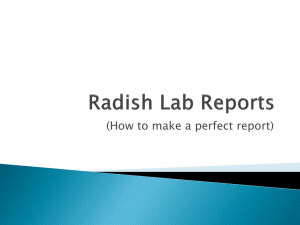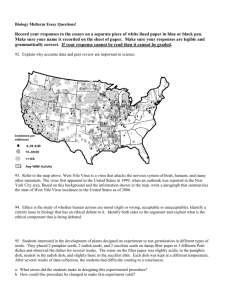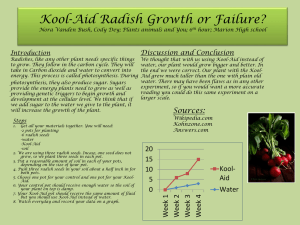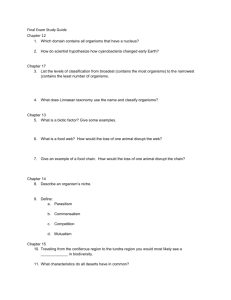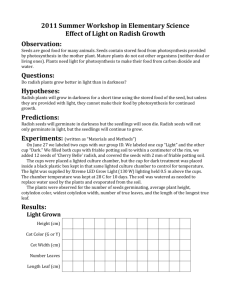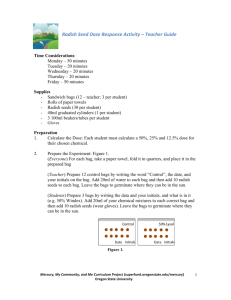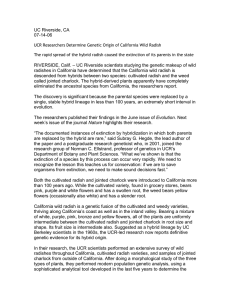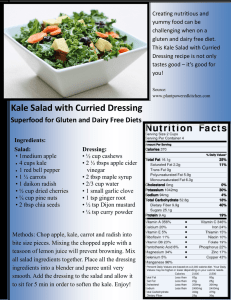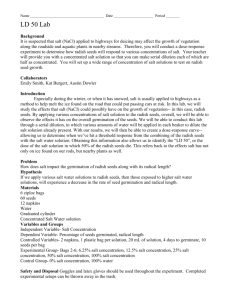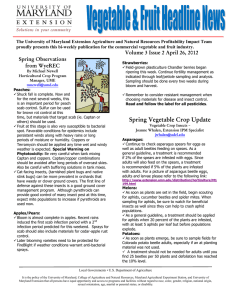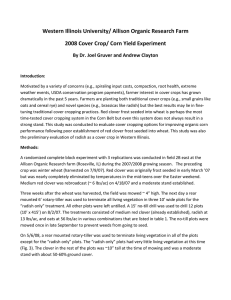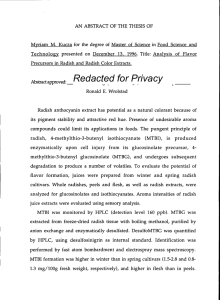“I'll have one radish salad, hold the salt
advertisement
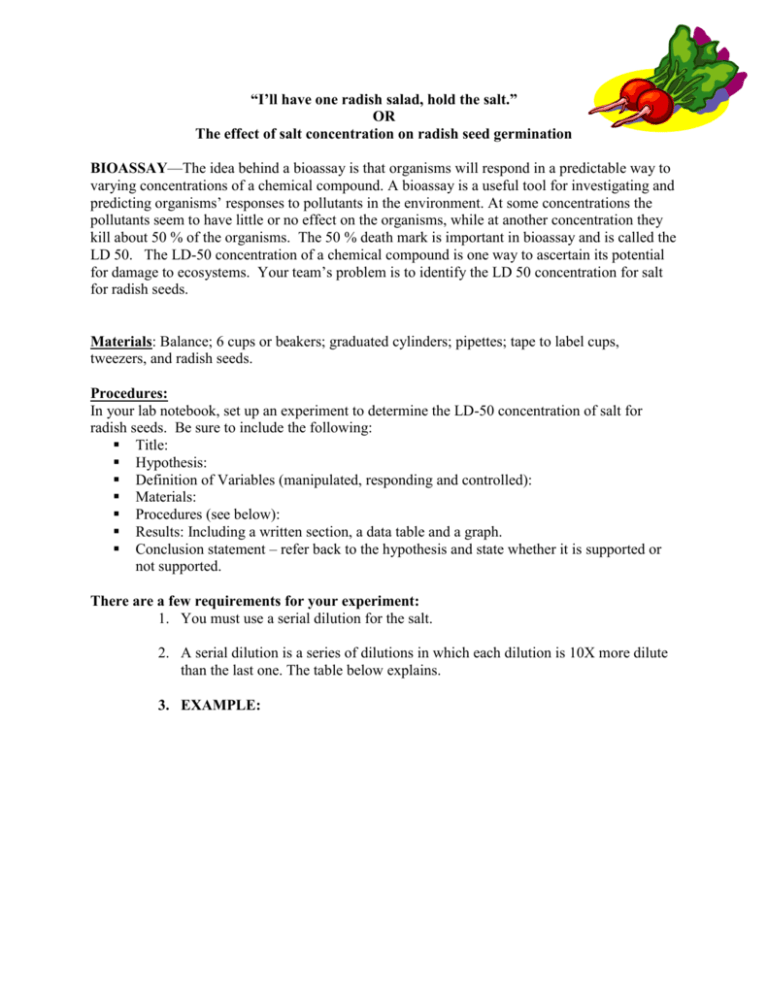
“I’ll have one radish salad, hold the salt.” OR The effect of salt concentration on radish seed germination BIOASSAY—The idea behind a bioassay is that organisms will respond in a predictable way to varying concentrations of a chemical compound. A bioassay is a useful tool for investigating and predicting organisms’ responses to pollutants in the environment. At some concentrations the pollutants seem to have little or no effect on the organisms, while at another concentration they kill about 50 % of the organisms. The 50 % death mark is important in bioassay and is called the LD 50. The LD-50 concentration of a chemical compound is one way to ascertain its potential for damage to ecosystems. Your team’s problem is to identify the LD 50 concentration for salt for radish seeds. Materials: Balance; 6 cups or beakers; graduated cylinders; pipettes; tape to label cups, tweezers, and radish seeds. Procedures: In your lab notebook, set up an experiment to determine the LD-50 concentration of salt for radish seeds. Be sure to include the following: Title: Hypothesis: Definition of Variables (manipulated, responding and controlled): Materials: Procedures (see below): Results: Including a written section, a data table and a graph. Conclusion statement – refer back to the hypothesis and state whether it is supported or not supported. There are a few requirements for your experiment: 1. You must use a serial dilution for the salt. 2. A serial dilution is a series of dilutions in which each dilution is 10X more dilute than the last one. The table below explains. 3. EXAMPLE: 4. Label 6 flasks 100%, 10%, 1 %, 0.1%, 0.01% and 0.001%. 5. You are going to use 5 grams of salt as your test chemical and 100%. Weigh out 5 grams and add that to 100 ml of water. Swirl to dissolve. 6. To make the 10 % solution, use the pipette and transfer 10 ml of the 100% solution to another beaker. Add 90 ml of water. This becomes the 10 % solution. How would you make the 1 % solution? 7. You are going to grow the radish seeds in plastic bags. Cut a piece of filter paper to fit in the bottom of the Petri dish and wet the paper with the appropriate solution Use 10 seeds per bag. 6. Record your data daily for the next 3 days. At minimum, you should record the # germinated, and the length of the radicle (the embryonic root of the radish). RESULTS: 1. Prepare a written summary of your results (include any relevant statistics such as mean, standard deviation). 2. Prepare at least 1 table and 1 graph to summarize your results. ANALYSIS: Prepare a written analysis of your results that answers the following: 1. What conclusions can be drawn from the data regarding the LD-50 concentration of salt for radish seeds? 2. What sources of experimental error exist in your experimental design? How could these be controlled in the future? 3. What applications and implications does this experiment have in the larger scope of environmental science? (In other words, what does knowing about the effect of salt on plants have to do with anything?) 4. What future experiments could you do to extend the knowledge gained from this experiment? How would those experiments be useful for the field of environmental science as a whole?



